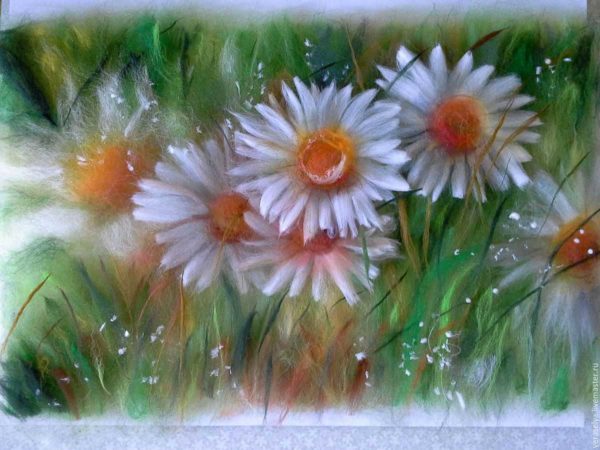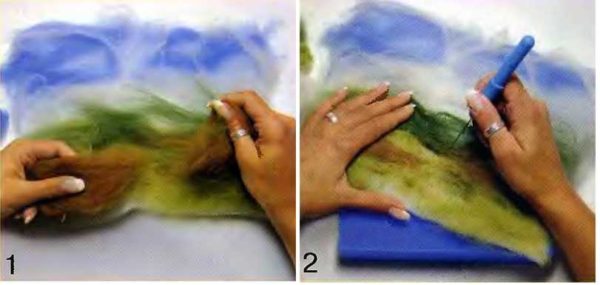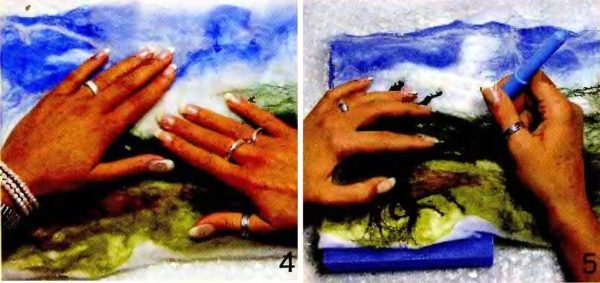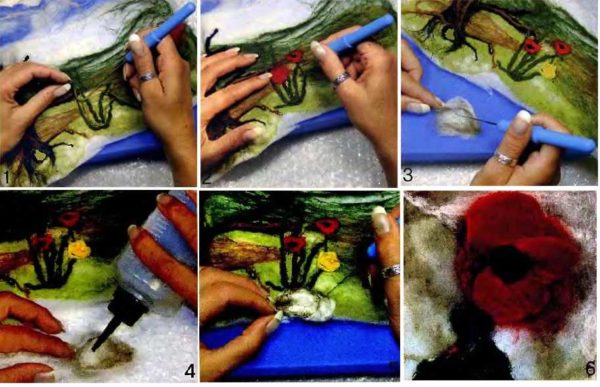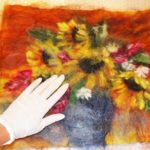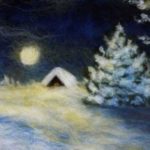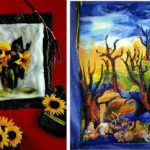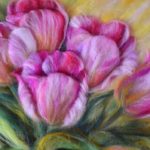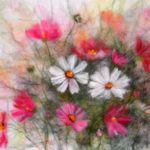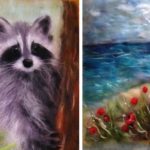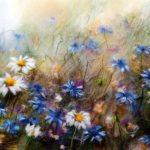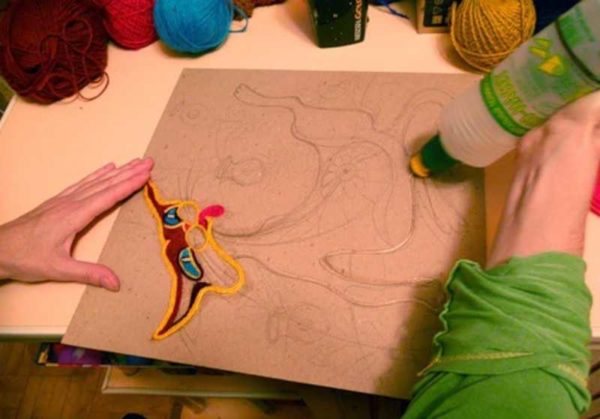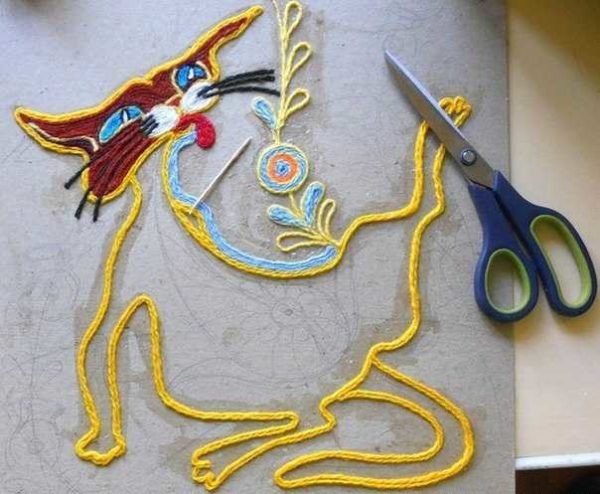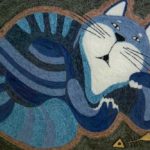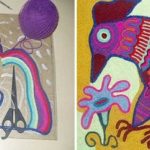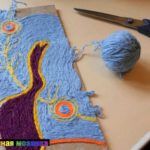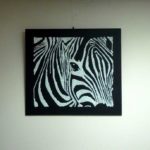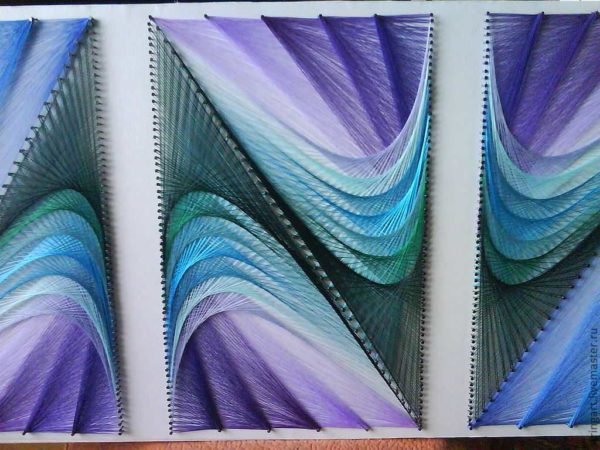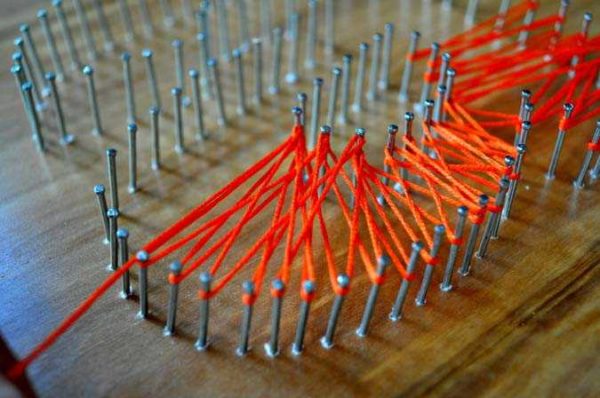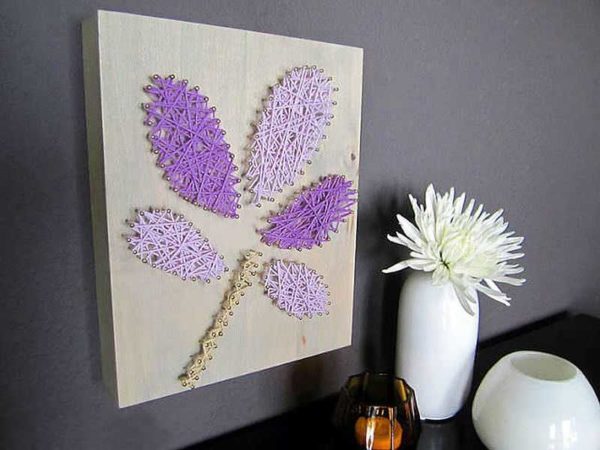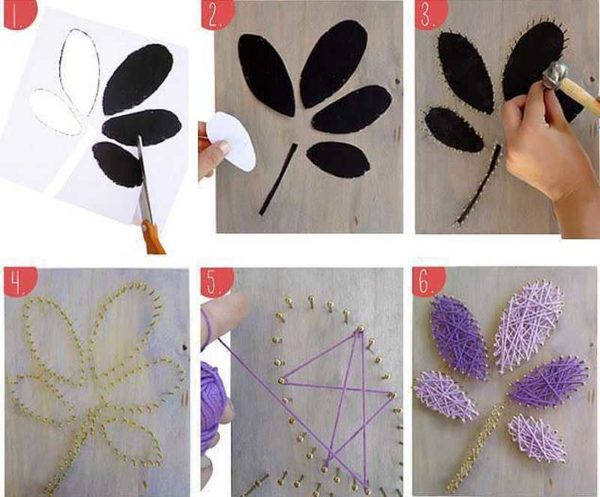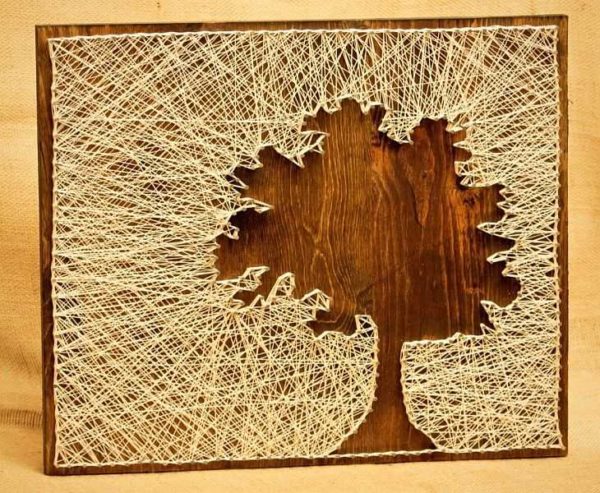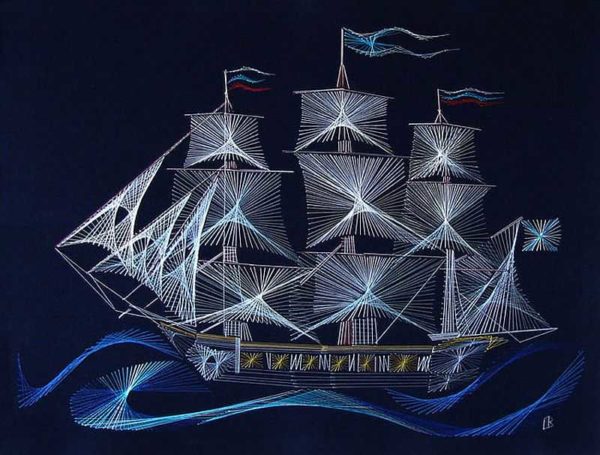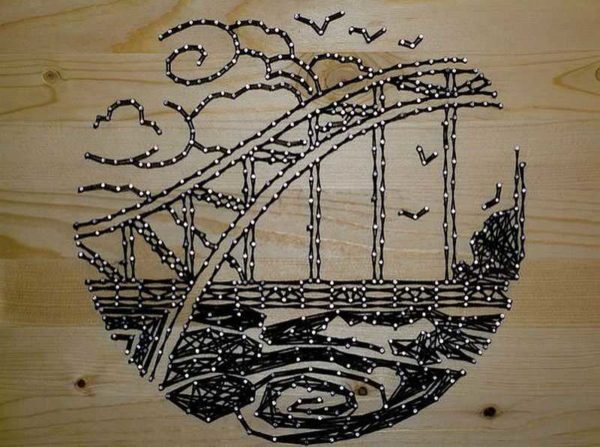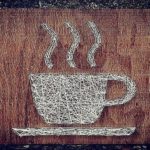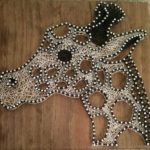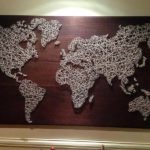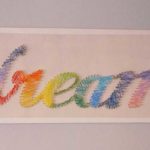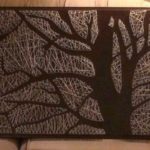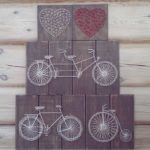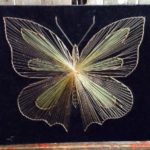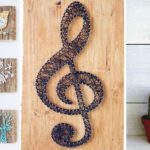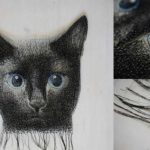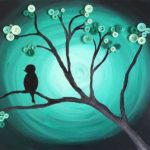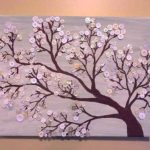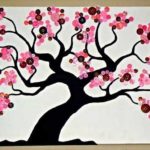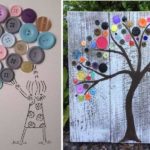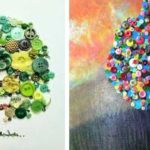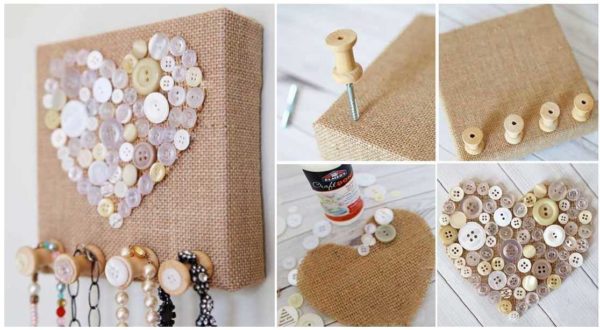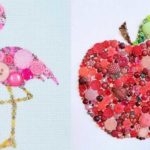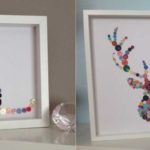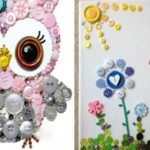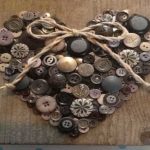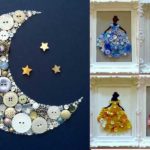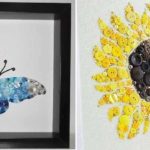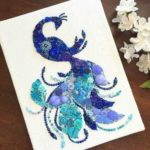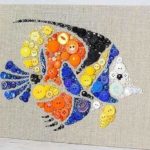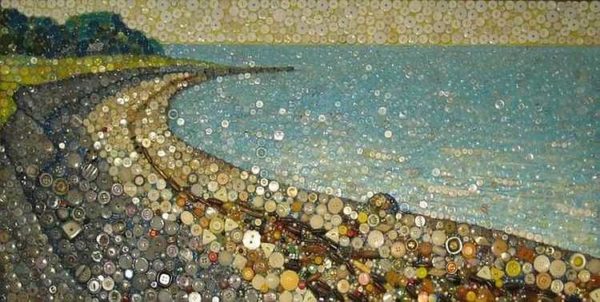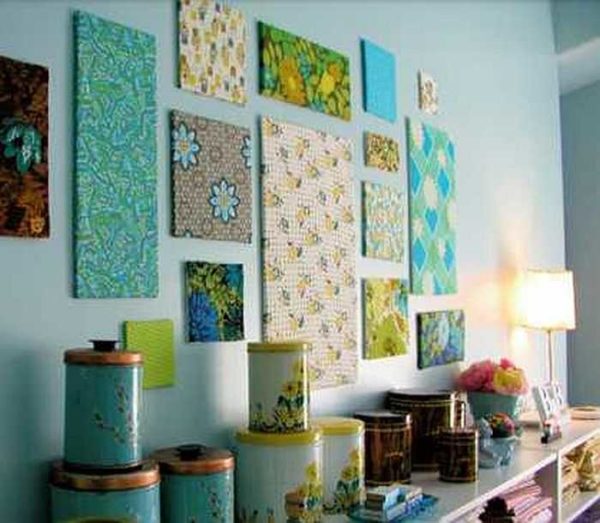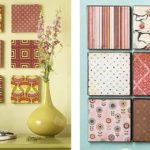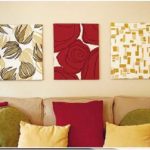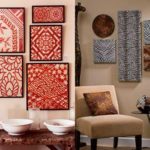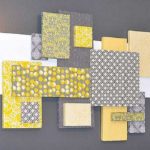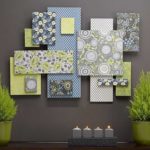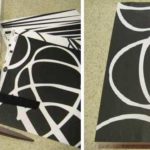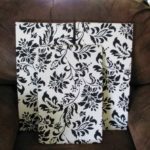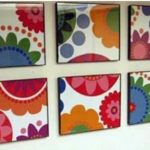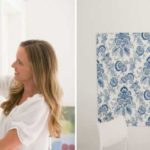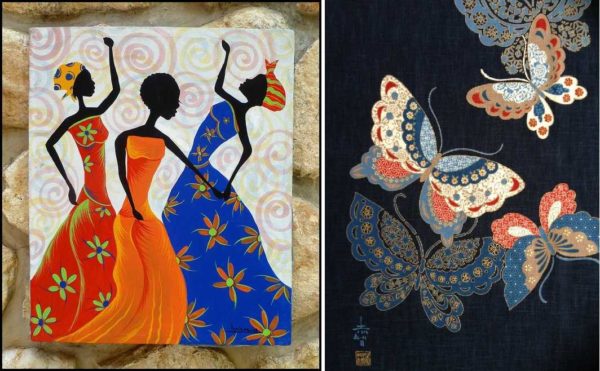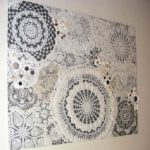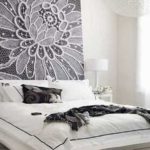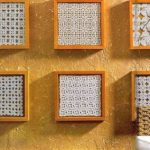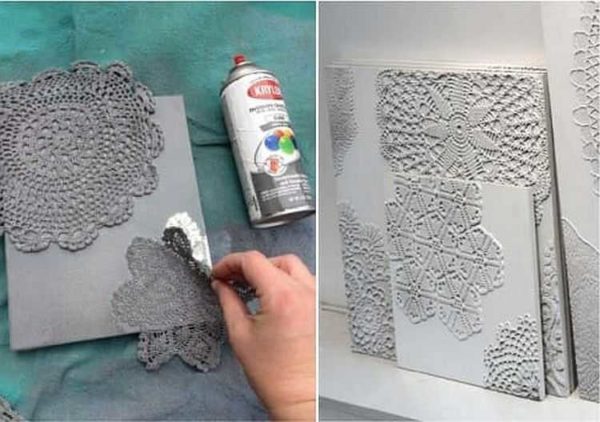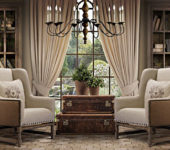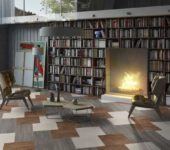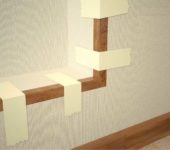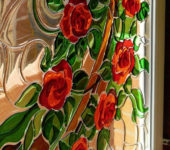Paintings for the interior - original masterpieces with your own hands
Creating a unique atmosphere at home is not an easy task. Although there are many finishing materials, furniture, styles today, they are not unique. And I want something of my own, personal, personal, such that no one else has. There is, of course, a way out. Even two. The first one is to order some kind of product from the master. The second is to do it yourself. And no one has yet come up with a better interior decoration than paintings, but not everyone knows how to draw. And it is not necessary. You can make paintings out of unusual materials. Such works will definitely be unique and inimitable.
The content of the article
From felt and on felt
It is not often that we see paintings and panels made of felt. In general, in recent years it has become a curiosity, like products made from it. We perceive hats and some other small things normally, but felt paintings are definitely rare. So, when describing pictures made of unusual materials, let's start with felt. For a start, you can make a landscape, flowers. They are easier to implement. With experience, you can make more and more interesting panels.
Special wool is used for felting. When creating pictures, it is laid out in layers and the base (non-woven), forming the desired pattern. When creating paintings from wool, the process takes place in several stages. First, the background, relief is laid out, then all the smaller and smaller details.
Making the background
First, we take those shades of wool that create the background. We spread them on non-woven fabric, trying not to leave voids. It is advisable to make two thin layers. The resulting background is transferred to a foam rubber substrate (5 cm or more). Then we take a special needle (for felting). Holding it vertically, we often pierce the laid wool. By this we are trying to ensure that it is connected to the base. If you look at the back of the non-woven fabric, you should see the threads that have come out.
Then the workpiece is laid on polyethylene (it is larger in size than the picture itself), the wool is moistened with soapy water (for 1 liter of hot water, one tablespoon of grated baby soap) and the felting process itself begins. To begin with, wrinkle the wet wool with your hands (press down, gradually increasing the pressure). Wet woolen threads adhere to each other with a pile, forming a single surface - this is the process of wet felting. The result is felt. For paintings only, we do not need to achieve high density. We stop when the base is dense enough. Blot excess moisture with a terry towel.
Adding details
Now you need to add details of the picture to the background: trees, flowers, stones, etc. With dry hands (wool sticks to wet ones), lay out the trunks of trees, bushes, stones. We pass the new parts well with a needle, moisten, knead with our hands. Then they use tougher means - a wooden rolling pin. We carefully pass the wet painting back and forth with a wooden rolling pin.
Lastly, we lay out voluminous small details: flowers, clouds, stones, thin branches, stems, leaves ... To make them voluminous, we use up to eight layers of wool, we make petals from balls, stems from twisted bundles.The procedure is the same: laid down, profiled (poked with a needle), wetted, felled, removed the remaining liquid. If the part is not bulky enough, you can repeat the process.
Photo works: paintings made of wool (felt)
- Wool sunflowers vase - paintings from unusual materials
- Landscapes are also very good at felting.
- These are the options
- Bulky tulips. More complex technique, many details and multidirectional threads
- How alive
- Felted paintings from wool for interior
- With the growth of skill, you can take on such projects
- A slice of summer on the wall
Pictures / panels from threads
Perhaps the most common way to create paintings from colored threads is embroidery. But this is a very painstaking and lengthy process, although the craftswomen enjoy it. But there are also faster ways. Much faster. These are glued pictures from threads and tension (winding). So it cannot be said that these paintings are made of unusual materials. But the techniques are definitely unusual.
Gluing
We take any threads, you can knit. Pictures are made on a rigid base: on cardboard, plastic, glass. The technology is simple. First, the outline of the drawing is applied to the base. On cardboard and opaque plastic, it is drawn, on glass and transparent plastic, you can not draw, but put the drawing down. Next, manufacturing begins:
- The contour is coated with PVA glue, a thread of the required color is glued to it. In some versions, it is contrasting (black, for example), in others - to match the detail.
- The resulting contours are filled with threads. You can glue the base, put a dry thread on the glue, you can moisten the thread with glue and put it on a dry base. Spiral filling looks good. This method is good if it is part of a body, background or other similar object. The second method is to cut threads of the required length, which are laid along one of the edges. This method is used when the direction of the thread is important - for drawing the relief, the direction of the wool, etc.
- Fill in the background. It doesn't have to be made of thread.
It's all. When everything is full, we leave the finished panel made of threads to dry for several days. After the glue dries, it can be covered with a clear varnish (take a water-based one - it dries quickly and does not smell).
- Such is the cat: a picture of threads
- Stylized bird
- In the process
- For a stylish interior
- Butterfly beauty
The threads are good for cartoon characters, drawn characters, pictures and sketches. Everything is stylized and very personal. An exact, photographic match will not work, since this technique is not intended for this. But it is simple, understandable, and requires very little time. This is an ideal activity for co-creation with children.
Of thread and nails
Interesting paintings are made from threads and nails. This technique has its own name - "string art". From the English word string - string (thread).
In appearance, it is difficult to confuse them with something, since the technique is original, the images are graphically clear. Depending on the object, they can be suitable for a children's room decorated in a fantasy style or for a living room in a modernist style, pop art, art deco. You can find options even for minimalism ... The pluses also include the fact that making a picture from threads and nails (pins) takes a little time. The smallest can be done within an hour. The technique is simple so that children can be involved.
What materials are needed
You can take any thread. Most often, threads are used for knitting. Depending on the texture, they get a different result. Smoother ones give sharper lines, "furry" ones create a denser background.They are pulled on small nails or pins. Carnations of any color and thickness. The main thing is that the hats are neat, but not small (not finishing nails). Length - depends on the scale of the picture. For small ones, a centimeter and a half is enough, for larger ones - three centimeters are possible.
The pins are suitable if the drawing has a fancy touch: butterflies, dragonflies, flowers ... In this case, we find pins with beads. They also serve as decoration at the same time.
Any base can be used into which you can drive carnations. It is most convenient to use high density foam. It is lightweight, and both nails and pins can easily go into it. A tree is also suitable, Chipboard (can be laminated, can be sanded).
Basic manufacturing technique
The creation process itself is simple. Choose a drawing. For a start, it is better to pick something simple, with not very many elements. Let's take a stylized flower as an example.
A contour is applied to the selected base. If you know how, you can draw by hand, if you are not confident in your abilities - we cut out a stencil, apply it. Further, we nail the carnations along the contours with a step of about 1 cm.In places of sharp bends, it is possible more often.
After all the carnations are stuffed, we take the threads, make a loop at the end, fix it on one of the nails. The first nail is completely arbitrary. Having fastened the thread, in a chaotic manner, we begin to entangle the carnations. The filling can be made more or less dense. In any case, it is desirable that it be seen that these are separate threads. This is the charm of these works. When the entire volume is filled, we fix the threads on one of the nails. That, in fact, is all. You can only hammer in the cloves a little, if necessary.
Variants and variations
Now a little about the nuances. In the above example, only the shape bounded by studs is filled. But it could be the other way around. Filled with threads is what is outside the limits outlined by the nails. The pictures are also interesting.
In both the first and second cases, the difference in color between the background and the threads should be significant. This gives a clear picture. In more complex versions, the threads are pulled not chaotically, but creating a certain binding. This is far from easy, experience comes with years of practice. Such pictures look magical.
Another way to create unusual paintings from threads and carnations is to draw only some elements of the picture in this way. It is important to split the image into fragments, the place of each carnation is calculated, since they are also elements of the same picture.
This technique is a way to paint a landscape using nails and threads. You need a special vision that allows you to break the picture into lines that, in general, create a whole image.
Photos of finished paintings from threads and nails
- Painting from unusual materials for the kitchen: a cup of hot drink
- The option when the position of each stud is important
- You can even make a map of the world
- Simple, creative ... it is important to find threads that change their color. Although, even from monophonic it will turn out well
- Tree - graphically
- A beautiful panel ... the texture of the tree is important
- The case when the direction of the threads should not be chaotic
- Different ideas ... great result
- Christmas decoration in the style of straight art
- This is already aerobatics ...
Panel made of buttons, beads, beads
This is really a really unusual material for creating paintings - buttons. Different sizes, shapes, textures, colors. They all go into action. They can be used as they are, can be painted, decorated with sequins, sequins, etc.It all depends on the idea and desire of the author. Any basis for button paintings. Cardboard, wood, polystyrene, fiberboard, chipboard, MDF, sheet plastic, glass. Depends on the idea and the desired effect. Buttons are glued to the base. The glue is universal, which, when dry, remains transparent.
Technique - start simple
Sometimes the buttons are used only as part of the picture. Since they are voluminous, flowers, foliage, and other small and medium-sized convex details are made of them. The background, large fragments are performed in any other technique, but in most cases it is a drawing or application. Such paintings are easy to do on your own or with the participation of children.
- Tree in the night ... interesting effect
- Delicate flowers are made of soft pink buttons
- Different colors, different mood
- A drawing decorated with buttons ... it turns out an interesting picture for an interior
- Paintings made from unusual materials: buttons fit this category
Basic technique
If desired, you can make any image, silhouette or even a picture from buttons. You should start with the simplest drawings. There seems to be nothing complicated in the process, but a lot of work takes a lot of time. For starters, it's best to see the result in a few hours. Choose a simple shape: a heart, an apple, the moon, the sun, a large flower of a simple shape, an image of an animal, a bird. Just remember that portrait likeness is not for this technique. You should have a recognizable shape.
The manufacturing process is simple. First of all, apply the outline to the base. It turns out - you draw by hand. No - cut out of paper. The drawing can be printed. Cut the drawing along the contour, attach it to the base, trace with a pencil. If you need multiple colors, draw borders that separate them (colors).
- The more shades and shapes of the same color, the more interesting the result is.
- Silhouettes of animals from buttons. Not a bad gift for animal lovers
- An owlet is more difficult to make, and the simplest drawing may be the result of a child's creativity
- Such a heart is a stylish interior decoration
- Different ideas, but they look great
- Two more easy-to-make drawings for a homemade button panel
- The magic peacock turned out from buttons
- Bright fish will decorate the nursery ... and not only
Next, fill in the contour with the existing buttons. For some designs, a crisp, straight edge is important. It cannot be achieved with the help of buttons, even the smallest size. In this case, you can use beads, beads. The voids inside can also be closed with beads or beads. All this looks very organic.
With experience, it will be possible to take on more serious canvases. But your patience and perseverance should be simply enormous. The shade and size of each button is already important here.
Panels and paintings from fabric and lace
Fabrics and lace are also quite non-standard materials for making panels and paintings. Now we are not talking about appliqué or patchwork technique - they are difficult to execute and require specific skills. The point is that now there are such fabrics, the pattern or texture of which can be a decoration of a modern interior. Lace also ceased to be the lot of the rich. And if you have old napkins or you know how to knit them yourself, you can make very interesting paintings, panels. The main thing is the idea and the ability to see the future of the panel in an ordinary piece of fabric.
Panel from fabrics and textiles
The first idea is to find two-tone fabrics. The main condition is that the colors should be the same, the drawings should be different. The easiest way to find black and white options. All other shades - running around the shops will be tortured. Although, the Internet can come to the rescue.The selected fabrics are pulled over the frames. Frames can be of the same size and shape, they can be different. Both options look good.
- You can make such a panel from three fabrics
- Colors should be repeated throughout the interior
- There must be something in common
- The main thing is the selection of colors ...
- Stylish wall decoration - fabric panels
Next idea: find fabrics with matching colors. There can be three or four flowers here, and they should be found in different combinations in the selected patches. As a rule, two basic colors are taken: white + black, white + gray, black + gray and one or two colors are added to them. Just keep in mind that "additional" colors should be present in the interior design. So, firstly, the panel will not be too colorful, and secondly, it will easily fit into the interior.
The found fabrics are again stretched over frames of different sizes and placed on the wall. One point: if it's hard to miss with the same frames, it can be difficult to arrange different sizes and shapes beautifully. Take a closer look at the photo and do something similar.
- Find a clear graphic drawing, divide it into fragments, pull it over the base. A unique painting is ready for interior decoration
- Black and white combinations are very popular
- If the room is fresh, you can add colors.
- There are definitely such prints
- It's not a problem to find such a pattern in fabric either.
The third idea: find a large bright drawing, divide it into several fragments. This will create a kind of modular picture that has been so popular in recent years. If the fabrics you see don't inspire you, try to find scarves. Russians, Chinese ... with any ethnic motives. Such paintings are 100% unusual and will help make your home stand out.
Lace fairy tale
Lace is a work of art in itself. It can be simply pulled over a contrasting backing. So much for pictures made of unusual materials.
- You can make amazingly beautiful panels from knitted napkins
- Large fragment on a contrasting background
- Small lace doilies with separate frames
There is an idea that will help to make many different pictures from several napkins. The napkins, however, will be damaged. So, we wrap the frame with colored solid-colored paper in a saturated tone. We apply lace, spray paint from a spray can. The paint should be contrasting.
Using this technology, you can make single paintings, you can - triptychs, modular paintings, etc. The best effect is obtained with knitted napkins. They have a more embossed pattern. A factory lace pattern is more difficult to transfer to paper, although it is also possible.

